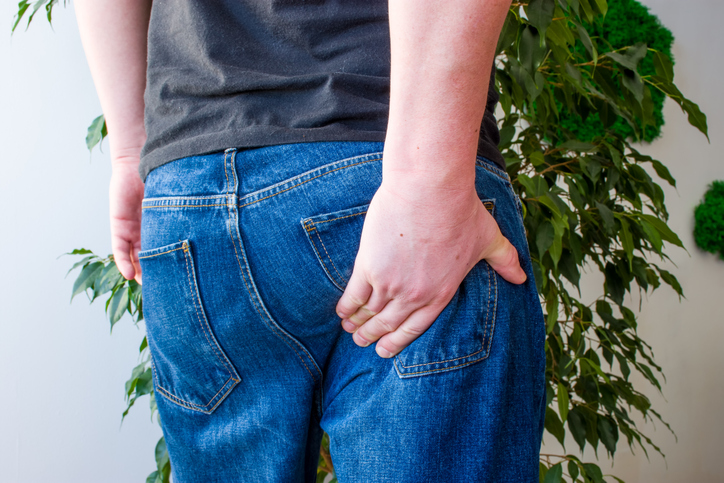La sciatica is a condition that can cause pain, numbness and tingling in the lower back and legs. It is caused by pressure on the nerf sciatica, which runs from the spine to the feet.
In this article, we will discuss some positions that can help relieve the pain of the sciatica, and sleep better. We will also discuss other ways to reduce the symptoms of sciatica.
Lumbar Spine Anatomy
La lumbar spine is the section of the spine located between the thoracic spine and the sacrum. It consists of five vertebrae, which are separated by intervertebral discs. These discs serve to cushion the vertebrae and absorb shock.
La lumbar spine is curved forward in the sagittal plane, helping to distribute weight evenly and maintain balance.
The lumbar spine vertebrae are larger than those of the thoracic spine, and they are supported by strong ligaments and muscles.
La lumbar spine is responsible for supporting most of the weight of the body and supporting twisting and rotational movements. It is also relatively flexible, allowing it a greater range of motion than the thoracic spine.
Sciatic Nerve Anatomy
Le nerf sciatica and the nerf the longest and widest in the human body. This is a nerf mixed, which means that it consists of motor and sensory fibers. the nerf sciatica originates in the lumbar region of the spine and extends all the way down the lower limb, ending in the foot.
Le nerf sciatica is formed by the union of several nerve fibers, including those of the last two nerfs lumbar (L4 and L5) and the first three nerfsacred s (S1, S2 and S3). This union occurs in the gluteal region, approximately at the level of the piriformis muscle.
From there, the nerf sciatica runs down the back of the thigh and branches into different nerfs which innervate different parts of the leg, foot and sole.
Le nerf sciatica plays an important role in human movements and sensations. The motor fibers of nerf sciatica supply the muscles of the posterior part of the leg and foot, allowing movements such as walking and running.
The sensory fibers of the nerf sciatica provide touch, temperature and pain information to various parts of the leg and foot.
Sciatica, definition and explanation
La sciatica is one of the most common and debilitating problems that can affect the lower half of your body. This condition is characterized by pain along the nerf sciatica, which starts from the lower back and goes down to the feet.
La sciatica can have many different causes, but the most common form is lumbosciatica, which is associated with back pain.
La sciatica usually affects only one side of the body, although in some cases both legs may be affected. The most common symptoms are pain in the buttock or thigh, which may spread to the foot.
This condition is often caused by spinal abnormalities that put pressure on the nerf. The sciatica can be extremely painful and make it difficult to perform basic tasks such as walking or sitting.
Causes of sciatica
There are many causes of sciatica, but the most common is radiculopathy lumbosacral.
This condition is caused by compression of the nerve roots in the lower back, resulting in pain that radiates down the nerf sciatica.
La lumbosacral radiculopathy is often caused by a disease of the spine. The sciatica may be caused by factors such as herniated disc, degenerative disc disease, spinal stenosis (narrow lumbar canal) or spondylolisthesis.
Among other common causes of sciatica appear:
- Piriformis syndrome;
- Lumbar osteoarthritis;
- Muscle spasms;
- And pregnancy.
Less common causes are:
- Tumors;
- Infections;
- And trauma.
Symptoms of sciatica
The most common symptom of sciatica is the pain that radiates along the nerf sciatica. This pain usually starts in the lower back and spreads to the buttock, thigh, and leg.
Other symptoms are:
- Numbness or tingling in the legs.
- Weakness in the legs.
These symptoms can make it difficult to walk or stand for long periods of time. In some cases, the pain may be so intense that it interferes with daily activities.
La sciatica is often accompanied by lower back pain, which can make the condition even more debilitating.
Preferred position in the presence of sciatica?
Although there is no one-size-fits-all approach to managing sciatica, certain positions can help alleviate symptoms. In the acute phase, it is generally recommended to keep the lumbar spine in a neutral position.
This means avoiding extreme positions, such as sitting forward with your legs crossed, or standing with your feet together and your knees locked. You may also find it helpful to wear a lumbar belt during this phase, although its use is only recommended temporarily.
To know the advantages and disadvantages of the lumbar belt, see the following article.
Once acute phase past, you can start experimenting with different positions to see what works best for you.
For example, if the cause of your sciatica is a herniated disc, you may find that sitting down or lean forward makes your pain worse. In this case, you will have to favor exercises in a standing position and in extension. The Mckenzie method is often used for this type of case.
If the cause of the sciatica is osteoarthritis, spondylolisthesis, narrow lumbar canal, zygapophyseal osteoarthritis, the positions lumbar extension (like standing) usually worsen symptoms. It is therefore necessary to favor the seated position and the lumbar flexion.
Ultimately, each person reacts differently to different positions, so it's important to listen to your body and find what works best for you.
Favorite sleeping position?
Most people have a favorite sleeping position, whether it's side, back, or stomach. Although there is not necessarily a "good" way to sleep, certain positions can help relieve pain and improve the quality of sleep.
For example, if you suffer from back painSleeping on your side with a pillow between your legs can help relieve pressure on your spine. Likewise, if you sleep on your back, placing a pillow under your knees can help maintain the natural curve of your spine.
And if you sleep on your stomach most of the time, placing a pillow under your pelvis can help prevent lower back strain. Modified pillows and mattresses may be needed to increase comfort.
Of course, it is not always possible to sleep in your ideal position, but a few simple tweaks can make all the difference.


